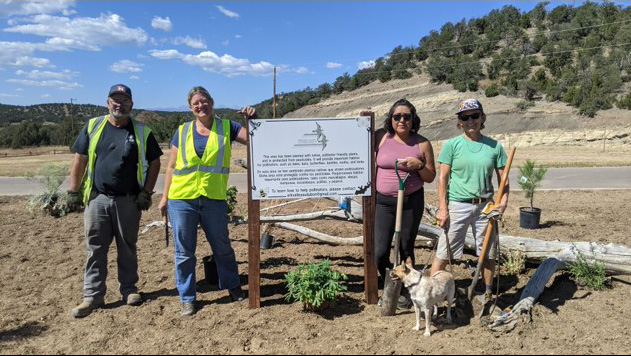ALBUQUERQUE, N.M. – Volunteers participated in events at several U.S. Army Corps of Engineers-Albuquerque District lakes in observance of National Public Lands Day, Saturday, Sept. 25, 2021.
National Public Lands Day (NPLD) is the largest annual volunteer hands-on restoration activity of its kind. It began in 1994 with three sites and 700 volunteers and became a yearly tradition.
In 2020, 2,400 volunteers served 8,300 hours on USACE-managed lands, removing 16,000 pounds of trash, cleaning 369 miles of roadways and shoreline, maintaining 44 miles of trails, improving 76 acres of habitat, and engaging 65 partner organizations.
ABIQUIU LAKE, N.M.

Thirty-two volunteers showed up for the 2021 NPLD event at Abiquiu Lake. Along with the Abiquiu Lake staff, they accomplished a variety of tasks in order to improve habitat, clean up public spaces, and improve natural resources around the project.
Volunteers and park rangers rehabilitated pollinator gardens with new plants. Fresh paint was applied to five picnic shelters in the Rio Chama Recreation Area. Eight bat houses in total at four locations were installed, creating shelter for potentially thousands of bats. And 19 large tires were removed by the volunteers cleaning up the shoreline.
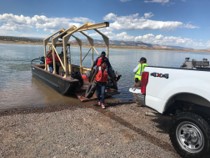
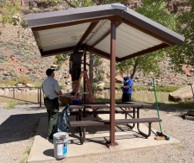
COCHITI LAKE, N.M.
Thirty-five volunteers came out to Cochiti Lake to participate in a variety of projects. The volunteers cleaned 2 miles of shoreline, maintained trails, restored and improved habitat, planted 20 trees, removed invasive species, and installed 20 bird and bat boxes.
SANTA ROSA LAKE, N.M.
Approximately 25 people spent 100 volunteer hours at Santa Rosa Lake for 2021’s NPLD event. The main focus was liter pick-up.
JOHN MARTIN RESERVOIR, Colo.
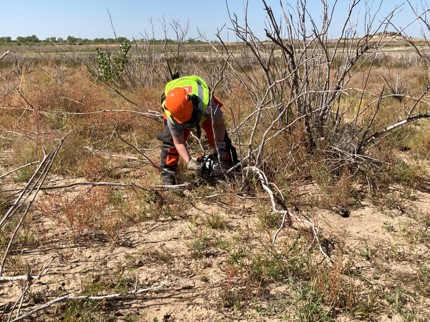
Volunteers and staff at John Martin Reservoir focused on removing dead tamarisk from the reservoir’s South Shore. Also called salt cedar, tamarisk is an invasive shrub found throughout the project. The reservoir shoreline has the highest density of tamarisk in the entire state of Colorado. In addition to crowding out native plant species, tamarisk provides poor habitat for wildlife such as the federally threatened Piping Plover and reduces shore-line access for recreationists.
Five volunteers assisted in removing cut tamarisk, including Colorado State Senator Cleave Simpson and his wife Cathy. After the cut limbs were chipped, there was a total of 4,454 pounds of tamarisk removed from the project.
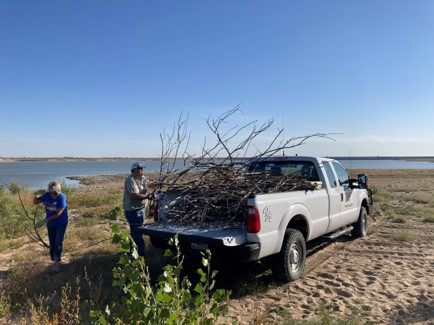

John Martin park rangers have an ongoing effort to remove tamarisk, improve wildlife habitat, and increase shoreline access at the reservoir.
TRINIDAD LAKE, Colo.
Completion of a native plant pollinator garden in the office parking lot’s center island was the main focus of Trinidad Lake’s NPLD event. USACE staff collaborated with the Arkansas Valley Audubon Society and the Trinidad Community Foundation to get this garden completed.
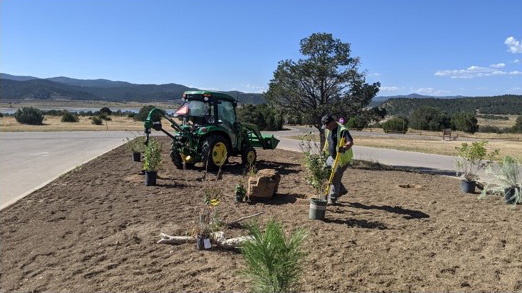
With a diversity of trees, shrubs, grasses, and forbs, as well as a dedicated volunteer base, the sustainable and environmentally-friendly interpretive area is ready for years to come.
